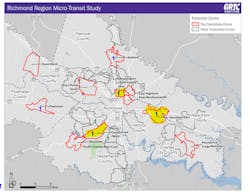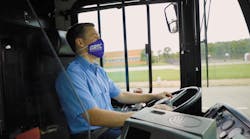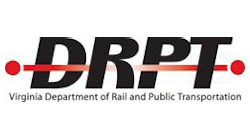GRTC receives approval to close transit gaps in rural and suburban areas of Richmond through microtransit
The Greater Richmond Transit Company (GRTC) has received approval from the Commonwealth Transportation Board to close transit gaps in rural and suburban areas of Richmond, Va., through microtransit, an on-demand system that allows people to book rides in real time and get picked up and dropped off in designated areas.
GRTC will get $4,057,766 from the Virginia Department of Rail and Public Transportation’s Transit Ridership Incentive Program (TRIP) to fund the three-year pilot program, which starts in fall 2023.
Riders in parts of Powhatan, Henrico, Chesterfield, New Kent counties and the Town of Ashland will be connected to existing high-frequency fixed routes.
The program will cost a total of $6.7 million with state and local funds. TRIP funds will apply to the Henrico, Chesterfield and New Kent routes. Other sources will fund the Powhatan and Ashland routes.
The Richmond region covers 2,165 square miles and is home to more than one million people. However, GRTC’s fixed-route service area only covers nine percent of that area, leaving much of the region without access to transit. Much of this unserved area is comprised of suburban and rural districts where traditional fixed-route transit service would be inefficient to operate.
“These parts of our region need more mobility options,” said GRTC Chief Development Officer Adrienne Torres. “They are home to families sharing a single car, retirees wanting to age in place and others that don’t have the option to make all their trips by single occupancy vehicle and need an alternative means of transportation.”
The five microtransit zones are designed to maximize opportunities to connect to major regional employers, medical facilities and government and community services for residents across the region that have limited or nonexistent transit options. They will provide transit service and regional connections to major employers such as Amazon and Randolph-Macon College, government services such as a Social Security office and the Powhatan County courthouse, large shopping centers such as the Brookhill Azalea Shopping Center and Ashland Hanover Shopping Center and healthcare facilities such as the VCU Health Emergency Center.
Torres noted the program should also reduce traffic congestion.
“Since microtransit service is anticipated to be used by citizens with limited vehicle access who may have had to rely on others to help make their daily trips, it should provide an overall reduction in single occupancy vehicle trips in the region, as it replaces these trips with shared rides,” Torres said.
The program will replace a peak-only fixed-route bus line with all day microtransit service. Where zones are contiguous to the GRTC service area, microtransit will provide connections to GRTC stops, giving patrons access to the wider Richmond-area transit network.
GRTC received TRIP funding in fiscal year 2022 to continue offering free fares, and its local bus ridership has exceeded pre-pandemic levels. It expects systemwide ridership to recover to 2019 levels by 2023 and grow by two percent per year each year through 2027.




